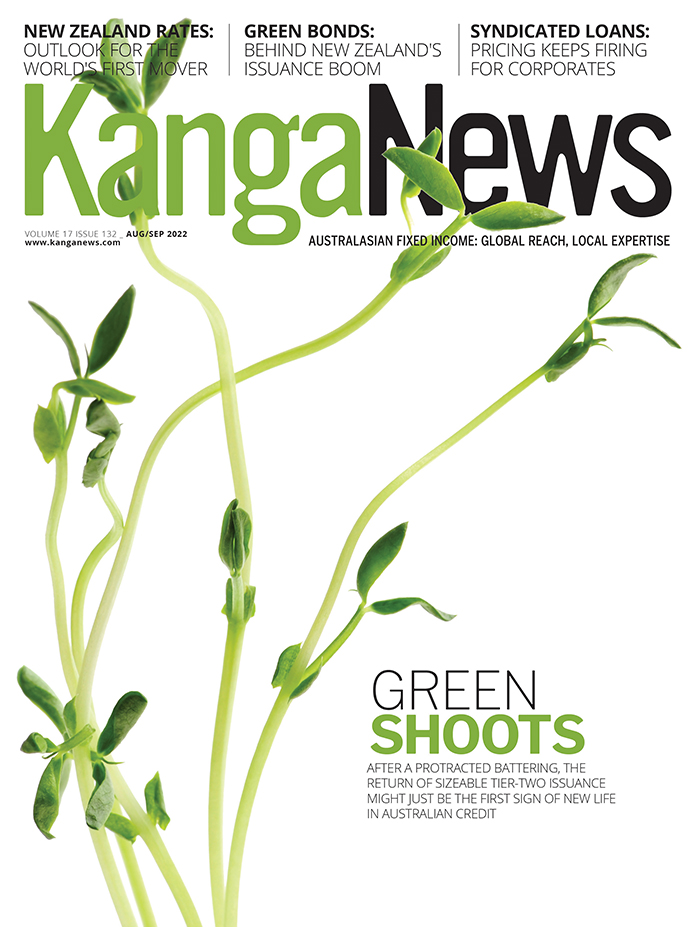Aug/Sep 2022
In this issue

In this issue
- Tier-two issuance and a potential credit revival
- Australian credit trading and liquidity roundtable
- H1 2022 issuance activity review
- New Zealand strategists and economists take stock
- Australian climate policy shake-up
- Australian corporate borrowers focus on loan funding
- New Zealand corporate green issuance drivers
- Climate reporting and growing greenwashing risk
- Ampol goes off grid for sustainability hybrid
- Paris alignment and investment allocation
KangaNews issues

